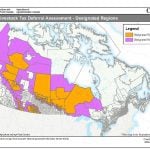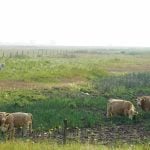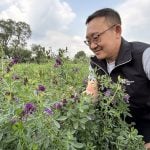
Tag Archives drought

Livestock Tax Deferral regions announced for drought-affected producers

Governments offer aid to drought-affected Manitoba livestock producers

Research focuses on drought tolerant alfalfa
Yellow flowers could help scientists breed new varieties that cope with dry conditions

Importance placed on cow herd size questioned
Some in the cattle sector don’t think policy should focus on expanding herd; others say fewer cows limit check-off revenue

‘Amber waves of grain’ recede in America’s heartland as wheat farmers struggle
Midwestern farmers abandoning wheat crops as profits recede, weather challenges

Barren fields, dry wells: after war, drought ravages Syrian farms
Digging wells adds costs as harvests fail; many farmers have heavy debts, want assistance

Drought developing in northern Saskatchewan agricultural region
Almost no rain has fallen since April 1 in Nipawin and Prince Albert

Transition to drought expected to be swifter this year
Fractions of a degree of change in ocean tempartures impacts weather patterns for ag producers in caring for their livestock and crops

Forage research a necessity in the face of decreased acres
Drought tolerance and productivity increases are targets of research programs

Drought may be new normal for beef producers
Producers talk shop on how they’ve been getting through years of drought



